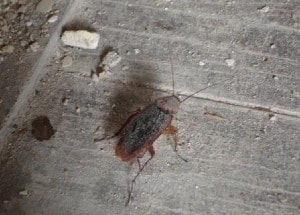There’s no home where palmetto bugs would be welcome. However, mere hostility won’t keep the pesky visitors away; you need to know how to get rid of palmetto bugs once they’ve arrived and how to prevent their reappearance in the future if you want your property to stay bug-free.
As with any insect nuisance, the best way to get rid of palmetto bugs is to know your enemy. Most people have no idea as to the thing’s identity, though. Read below to find out who you are dealing with and how, and if, it’s different from other common bugs!
[wpsm_titlebox title=”How to Get Rid of Palmetto” style=”main”]
- Eliminate any potential roach attractions. Store food in tightly sealed containers.
- Seal any cracks. Place mesh screens over vents and windows.
- Use special foggers, sprays and baits. There are also powders based on boric acid.
- Keep your habitat as dry and food-free as possible.
[/wpsm_titlebox]
Meet the Palmetto Bug
Fancy as it may sound, the name “palmetto bug” is rather a vague term. The reason is that it’s the colloquial name of several different cockroaches.
One species commonly termed palmetto bug is the American cockroach, found pretty much across North America as well as in other parts of the world. It also goes under the Latin name Periplaneta Americana and is often dubbed water bug. With an average length of 1.6 inches, this is the largest species you’re likely to come across in or near your house. You can identify the roach by its outstanding size and a brown body with a yellowish band on the pronotum (chest/neck plate). Most individuals have relatively flat oval bodies with long spiny legs and wings that only about cover the abdomen in females and protrude in males. This species is capable of flying, mostly in a gliding style.
American cockroaches have the typical roach life cycle where females lay eggs in egg cases, called an ootheca, which then hatch into nymphs (these look much like adults but are smaller) that finally become mature roaches.
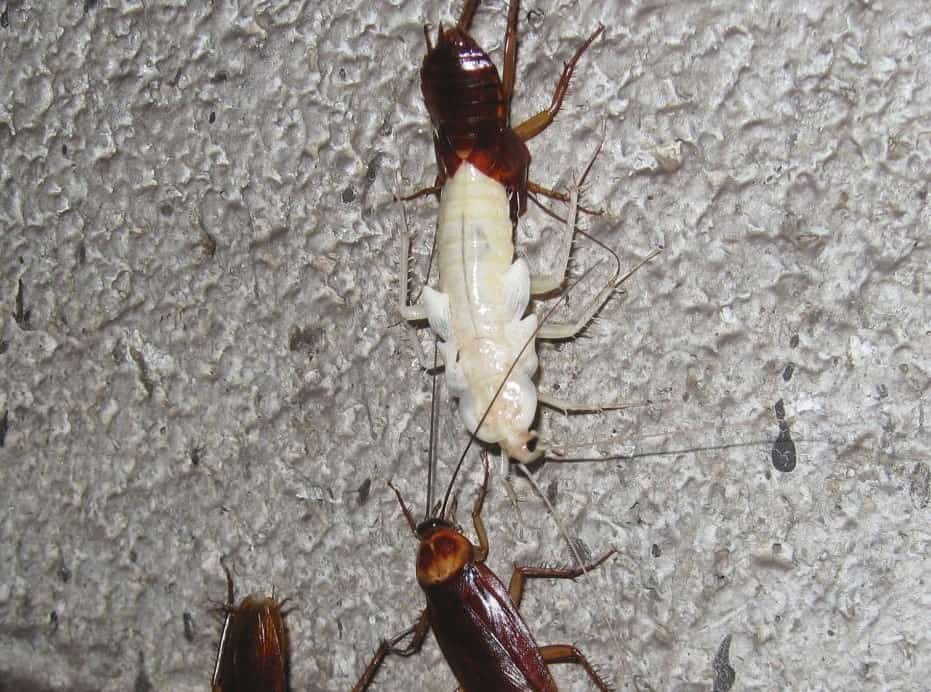
These cockroaches are often found in or around human homes. These opportunistic feeders look for sheltered places with abundant shadow and food sources where they can stay undisturbed. Humidity is key — American cockroaches are attracted by wetness such as near sinks or leaky taps.
A Florida woods cockroach
The Florida woods cockroach, or Eurycotis floridana, is another species that goes under the name “palmetto bug”. These insects grow to 1.4 inches on average and are slow runners. This roach is known as the skunk roach, or stinking cockroach, for its ability to emit foul smell when disturbed. The species is mostly found in southeastern parts of the US.
Unlike American roaches, these pests have a darker, deep brown to almost black body and underdeveloped wings. Their bodies are shiny, wide, and rounded. They follow largely the same life cycle as their American brothers and sisters. However, these roaches are less likely to come looking for food or shelter in urban homes as their diet consists primarily of rotting plant matter.
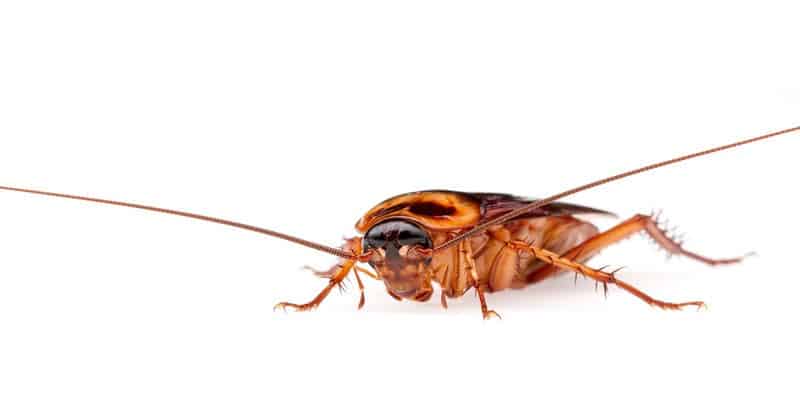
A smoky brown cockroach
Finally, the smoky brown roach, a close relative of Periplaneta Americana, is a frequent guest in human homes across the southern part of the US and in other places with a tropical climate. It has a dark mahogany body. Smoky brown roaches are just a little smaller than American ones and have a similar life cycle and feeding habits.
To sum up, it’s safe to say that people in North America who complain of palmetto bug infestation are most likely dealing with American or smoky brown cockroaches.
Getting Rid of Palmetto Bugs
Now that you know a little about the unwelcome guest, it’s time to finally send it packing. To make sure it never comes back, however, it’s important to understand what attracted it in the first place.
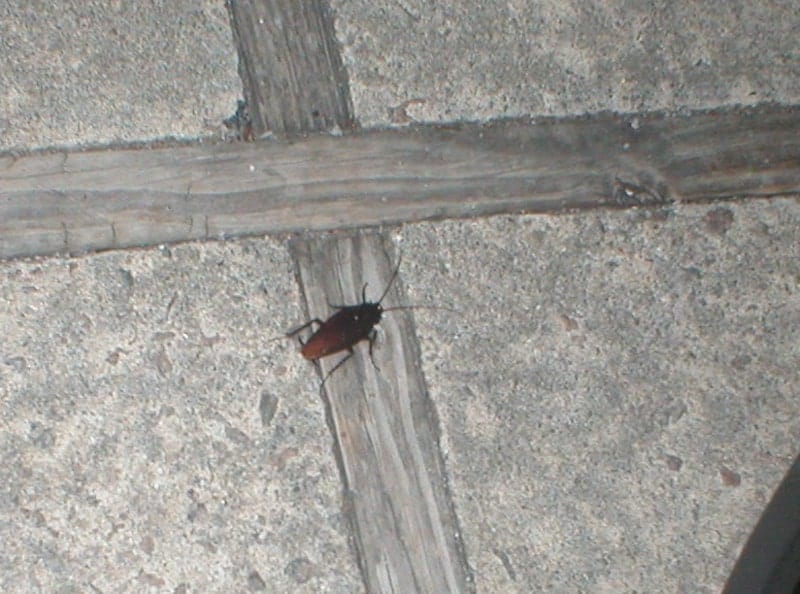
What Makes Palmetto Bugs Get Indoors
In areas where temperature can get low outside, it’s not uncommon for roaches to use cracks in walls and floors as well as gaps in window/door frames to get into people’s homes. They like warm places which are humid, such as basements, areas near leaky taps and pipes, etc. Water is a major attraction for most species.
Even the pickier roach species will scavenge for food if their favorites are in scarce supply. American and smoky brown roaches are born scavengers who never scruple to feast on whatever leftovers you didn’t bother to put in the trash bin last night.
Shelter is also essential to cockroach comfort. Roaches don’t like to be bothered, especially if they’re planning to lay eggs in the nearest future, so they look for cluttered spaces where human presence is limited.

Signs of Palmetto Bug Infestation
If you aren’t quite sure you have palmetto roaches in the house, look for the following signs and symptoms:
- Physical presence
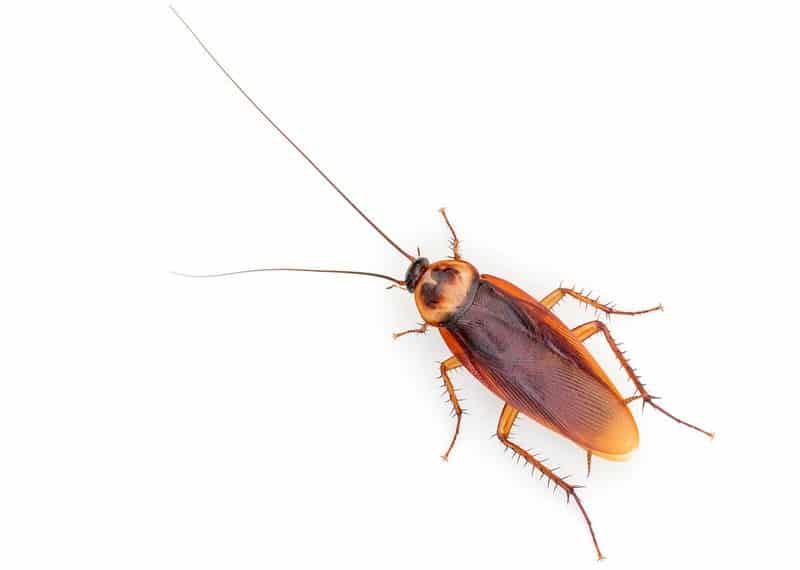
The best way to tell if you’re experiencing an infestation is to catch a guilty roach red-handed. The species that are colloquially termed palmetto bugs are generally active during the night. However, this doesn’t prevent them from migrating in broad daylight when disturbed. - Droppings
Roaches will leave feces as they travel across your property. With palmetto bugs, which belong to larger species, these are usually cylindrical shaped. - Shed egg cases
Palmetto bugs can lay eggs inside human homes, in which they prefer well-protected places where plenty of food is available. Overfilled rotting trash cans under the sink make the perfect accommodation for roach eggs. These are stored in hard oval cases, usually shiny, reddish-brown to dark mahogany, sometimes with lighter marks. - Odor
It’s not just skunked roaches that stink. Other species can emit pungent odor, too. If the smell is really overwhelming, this is a sure sign of massive infestation. However, this is a sign not specific to palmetto roaches as compared to other roach species.
How to Keep Palmetto Bugs out of Your House

While most people will probably search for “how to kill palmetto bugs,” as soon as they come across one in their kitchen, efficient palmetto bug control is not (all) about killing the pests. Physical extermination is just one of the steps that might prove futile unless you take the necessary precautions.
Here’s how to act if you have palmetto roaches on your property.
Step 1. Eliminate any potential roach attractions.
Start by hiding any food leftovers. Keep your food in containers that close really tight, preferably in out-of-reach areas. Chances are that you’ll have to alter your eating habits, too. It’s best to have a dedicated eating area in your home.
If you have anything in your house that leaks liquids, such as taps and pipes, fix it. Remember to remove puddles around the sink and in any areas where water tends to accumulate naturally.
Step 2. Seal any cracks.
Use caulk to seal the usual roach entry points such as cracks and holes in the walls, floor, and window/door frames. Place mesh screens on vents and windows.

Step 3. Exterminate!
It’s pesticides such as cypermethrin, permethrin, and hydramethylnon what kills palmetto bugs. These are commonly formulated into foggers, sprays, and baits.
Roach foggers aren’t the best tool for palmetto bug extermination since they are meant for indoor use only (remember the roaches are only occasional visitors) and require toilsome precautions. Sprays, however, are a great way of closing off cracks and crevices without too much risk for us humans. Insect growth regulators are added to some in order to break the roaches’ life cycle, in which nymphs never mature. If not, I recommend using an IGR concentrate as an additional measure.
Baits are meant to be attractive to roaches. They make their mouths water and then poison them slowly. I say slowly because this means the doomed guy will be able to reach his nest and probably share the deadly threat with his kinfolk. If not, they’ll probably eat him when he’s dead anyway and dies. Profit! For those who are worried about their pets and children, roach baiting stations are available for safe poison placement.

Finally, boric acid-based powders are a common roach treatment that works on contact. Unfortunately, roaches can learn to avoid heaps of those, so I wouldn’t recommend it as a solo treatment.
Best Palmetto Bug Treatments
In this part of the article, I’ll share my favorite anti-palmetto roach solutions that will put a stop to infestation.
1. Advion Gel: The Overall Best Palmetto Bug Control Tool
[amazon box=”B086YTBW9D” template=”vertical” tracking_id=”how-to-get-rid-of-palmetto-bugs-20″ button_text=”Check price on Amazon” button_detail=”https://shareasale.com/r.cfm?b=410159&u=2583381&m=43235&urllink=www%2Edomyown%2Ecom%2Fadvion%2Dcockroach%2Dgel%2Dbait%2Dp%2D304%2Ehtml&afftrack=how%20to%20get%20rid%20of%20palmetto%20bugs” button_detail_text=”Check price on DoMyOwn”]
Specifications:
- Item Volume: 4.24 Fluid Ounces
- Item Form: Gel
- Number of pieces: 4
- Item Weight: 6.9 ounces
- Item Dimensions LxWxH: 7.6 x 5.4 x 1.9 inches
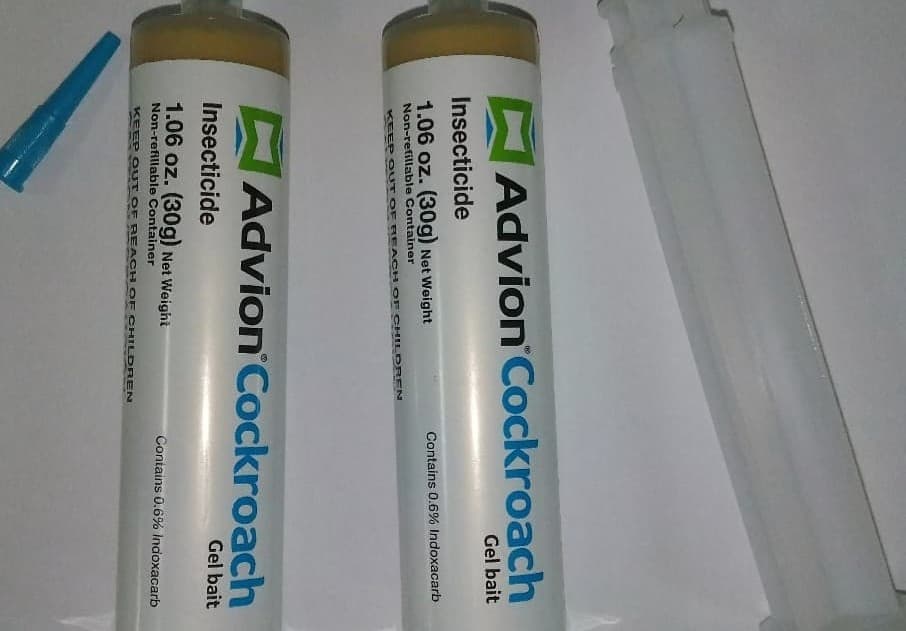
This is my personal favorite. Formulated into a thick gel based on indoxacarb, a pesticide that kills a range of cockroaches by blocking their sodium nerve channels, Advion comes with a narrow nozzle for precise placement. This reduces the risk for your pets and children if any.
The application is a time- and labor-consuming process. However, it works for months, killing not just the actual victims but their relatives who feast on their remains and/or feces. The gel works both indoors and outdoors.
| Pros: | Cons: |
|
|
2. Tempo Ultra SC: The Best Solution for Those Experiencing a Massive Palmetto Bug Infestation
[amazon box=”B0038KCAJS” template=”vertical” tracking_id=”how-to-get-rid-of-palmetto-bugs-20″]
I highly recommend this Tempo pesticide if you’re determined to go nuclear. The formula contains 11.8% Beta cyfluthrin, an insecticide that affects the nervous system when swallowed, causing death in a wide range of pests such as roaches (multiple species), ants, bed bugs, and many more.
The product comes in an 8.12 oz ml bottle that makes about 30 gallons of ready-to-use mixture for indoors and outdoors. The effect is fast and long-lasting. Note that this product will also kill bees if they forage on plants that have been treated. It’s also dangerous to fish and requires favorable weather conditions for application.
| Pros: | Cons: |
|
|
3. HARRIS Boric Acid Roach and Silverfish Killer Powder: An Easy-to-Use Aid in Getting Rid of Palmetto Bugs
[amazon box=”B0026MD0G6″ template=”vertical” tracking_id=”how-to-get-rid-of-palmetto-bugs-20″ button_text=”Check price on Amazon”]
Specifications:
- Active ingredient: Boric Acid (99%)
- Item Form: Powder
- Item Weight: 1.1 Pounds
- Product Dimensions: 13.5 x 10 x 10.75 inches
- Target Species: Roaches, Palmetto Bugs, Water Bugs and Silverfish
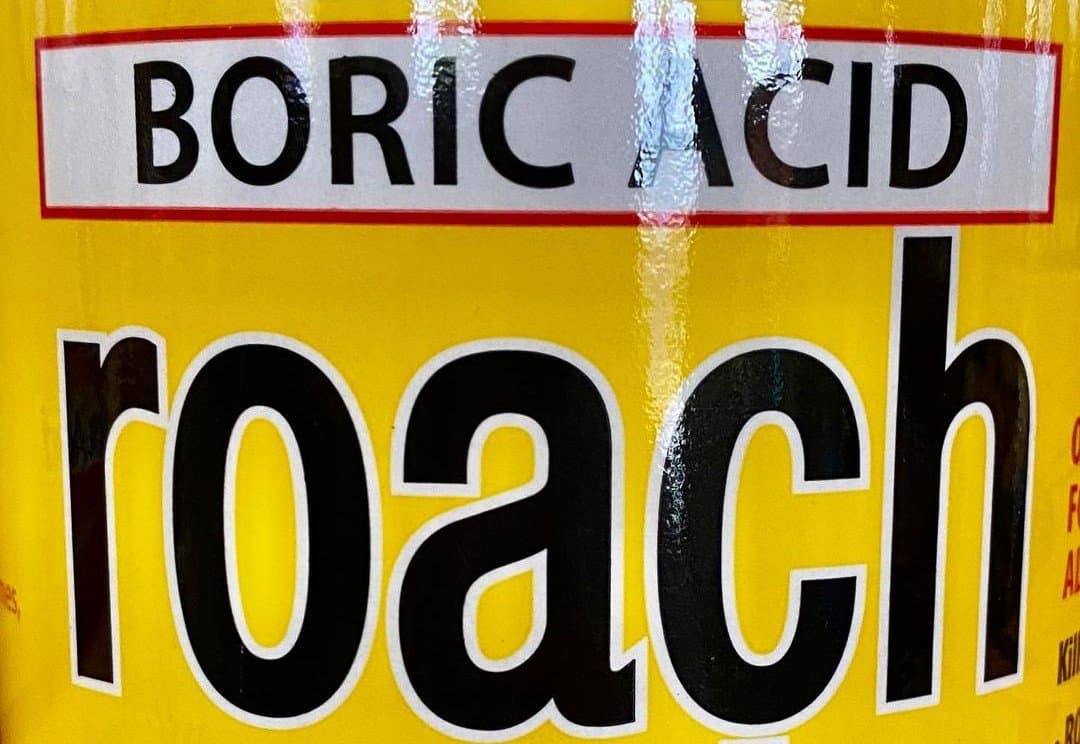
This product is nearly pure boric acid (99%). It kills roaches within 72 hours from contact and remains active for weeks as long as it’s dry.
A lure is added to the formulation to overcome avoidance behavior. The powder comes in a convenient puffer bottle with a straw for precise placement.
Although the product is labeled safe for use in homes with pets (and humans), it has to be placed where your furry friend and/or child won’t reach it.
| Pros: | Cons: |
|
|
How to Get Rid of Palmetto Bugs for Good
Now that the gang is gone, you want to make sure they’ll never return.
To do so, don’t skip the IGR step (see above) and keep your habitat as foodless and dry as reasonably possible. Proper maintenance of potentially leaky equipment and wet areas, as well as secure food storage, are key.
Many roach chemicals, such as sprays, provide for regular preventive use. I recommend taking advantage of these if you’ve experienced a really bad infestation or have trouble keeping your family’s eating/cleaning habits in check.
FAQ
Here are some questions that people commonly ask about palmetto bugs.
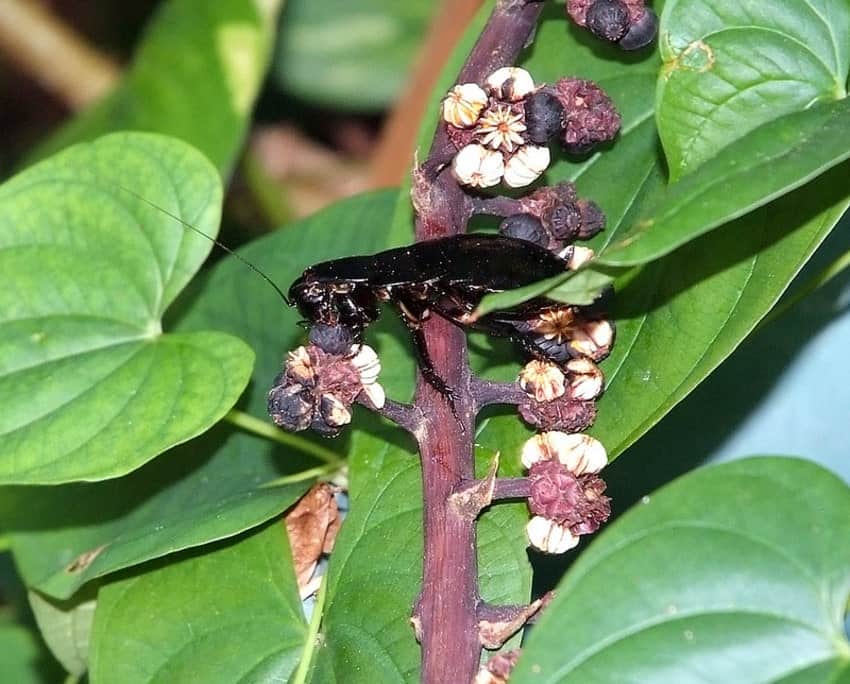
Do palmetto bugs bite?
All three species have the ability to bite us humans but rarely do so. They’ll mostly bite when really alarmed. Let me say it once again, and this is extremely rare.
Is a palmetto bug a roach?
Yes, it is. Which roach, however, remains a question. The name is commonly used to refer to American, smoky brown, and Florida wood roaches. The latter is very infrequent guests in human homes.
Are palmetto bugs harmful?
Palmetto bugs can spread bacteria and viruses as they crawl in the garbage and then contact your food and cooking surfaces. Some people are allergic to them. If you have asthma, it can worsen in the presence of palmetto roaches.

Takeaways
Palmetto bug is the colloquial name of several roach species that might sneak into your home for food and shelter. The question is this not how to repel palmetto bugs but how not to attract them.
Keep your house clean and sealed and use an effective anti-roach chemical, paired with an insect growth regulator if the infestation is serious, and the pests will be gone. Preventative use of pesticides is desirable in high-risk areas, but it’s no substitute for clean habits.
Which species does “palmetto bug” refer to in your area? Check the Meet the Palmetto Bug section and share in the Comments!
References:
- American cockroach (Kathryn A. Barbara, University of Florida):
http://entnemdept.ufl.edu/creatures/urban/roaches/american_cockroach.htm - American Cockroach (Periplaneta americana) (Michigan State University):
https://www.canr.msu.edu/resources/american-cockroach - Florida Woods Cockroach (AKA Palmetto Bug) Eurycotis floridana (Walker) (Christopher S. Bibbs and Rebecca W. Baldwin):
https://edis.ifas.ufl.edu/pdffiles/IN/IN91500.pdf - Cockroaches and Their Management (University of Florida IFAS Extension):
https://edis.ifas.ufl.edu/ig082

